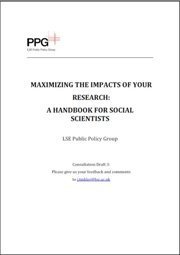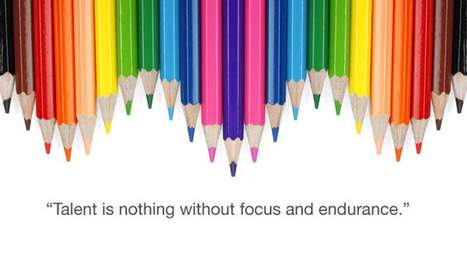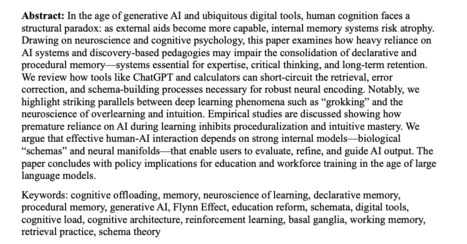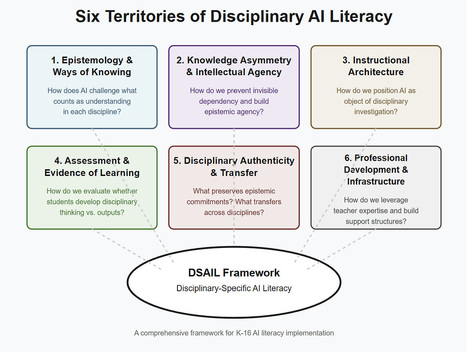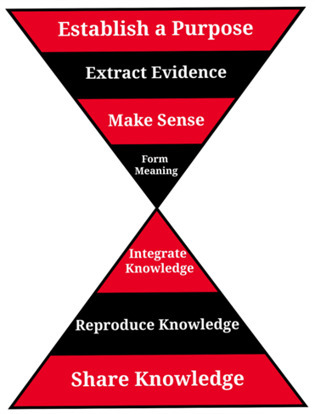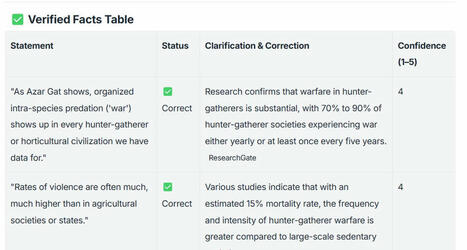
|
Scooped by
Ana Cristina Pratas
onto Digital Delights August 28, 2012 10:42 PM
|
Get Started for FREE
Sign up with Facebook Sign up with X
I don't have a Facebook or a X account

 Your new post is loading... Your new post is loading...
 Your new post is loading... Your new post is loading...
Ana Cristina Pratas's insight:
Nabila bruno's curator insight,
April 26, 2023 2:20 AM
acquista subutex online acquista subutex online
For the past few months, I've been visiting schools and hearing from students about why and how they're using (or refusing) generative artificial intelligence. In this article, I'm talking about two of the more problematic perspectives that have emerged from those conversations: it's good enough, and it's better than me.
In "Metaphors We Live By," Lakoff and Johnson emphasise that metaphors are fundamental to human thought and language, not just decorative language. In this post, I've examined my own use of metaphors to describe AI and analysed their implications, highlighting the power and limitations of these metaphors in shaping our understanding of AI and its impact.
From
topkit
by Nafije Krasniqi Prishtina, Karen Tinsley-Kim The University of Central Florida Instructional Development team embodies Cavalier’s Human + AI + Human model to its fullest by demonstrating the development of accessible content using the ADDIE framework. Abstract This paper explores the integration of generative artificial intelligence (AI) tools within the ADDIE instructional design framework, as … Continue reading "Empowering Instructional Design with AI – Expanding your Online Preparation Toolkit Through the ADDIE Framework "
Discover three AI teammate roles—Tasker, Draftsmith, and Facilitator—to help students build AI fluency and apply responsible use in learning.
"Design assignments that invite different roles. For example, ask students to begin with AI as a Tasker (perhaps organizing sources or cleaning a dataset), then shift to using the Draftsmith to help them find passive voice or other syntax issues in a paper, and finally draw on the Facilitator to find the holes in their arguments before submitting a final paper. Intentionally stating the role each assignment calls for and requiring them to state when they’re using the Tasker, Draftsmith, or Facilitator solidifies their understanding that their approach to AI differs by role.
OER = Open Educational Resources?
Why generative AI and ChatGPT cannot replace human creativity or original thought. Learn strategies for teaching students to navigate AI while fostering critical thinking, innovation, and authentic learning. 
Nik Peachey's curator insight,
October 30, 6:03 AM
Theoretically it should increase the value of original thought and creativity.
DL 408 The Efficiency Trap Published: October 19, 2025 • 📧 Newsletter The Efficiency Trap: When Shortcuts Lead Nowhere This week brought a perfect storm: Microsoft and Google announced free AI tools for every teacher in America, while new research revealed that 90% of AI-generated lessons engage...
From
aace
Mike Caulfield, co-author of Verified, a practical guide on using the Internet to verify claims, recently released ‘Deep Background’ a rigorous AI-based fact-checker that anyone can use for free. You can access ‘Deep Background’ in ChatGPT or paste … Read more
Tools and Trends How to Develop an Online Course Quickly and Effectively: A Ten-Step Process April 16, 2020 Tools and Trends Faculty and instructors are challenged with the task of putting their courses into an online learning environment and to do so rapidly. What’s the best way do this?
High school teacher Tom Moore reminds young writers that an AI-generated essay rings false because it can’t replace the traits that drive huma
From
medium
Prompt: Formulate your initial request. |
Five Fundamental Challenges That Will Reshape Education in the Age of Artificial Intelligence
Abstract
From
wiobyrne
Why “Prompt Checklists” (and Digital Literacy Checklists) Ultimately Fail Us My recent post argued that “prompt engineering” is really dialogue orchestration, and that static checklists are failing us. But why do we keep gravitating towards these oversimplified solutions?
Not another set of guidelines, but a map of the intellectual territory we must traverse together.
Learn how to use collaborative whiteboards in online learning to boost engagement, apply adult learning theory, and make online and distance education more interactive.
Learn how to move from banning to partnering with AI in the classroom. Discover scaffolded strategies for teaching with AI in higher education that foster critical thinking, responsible use, and meaningful student learning.
How to Integrate AI Developmentally into Your Courses
Discover how relational communication theory enhances student learning and competence. Explore classroom strategies using self-disclosure, communication accommodation, and inclusive practices to build stronger student–teacher relationships and foster intercultural understanding.
Explore the Hourglass Paradigm of Learning to boost cognitive engagement, active learning, and long-term retention. Learn strategies to help college students move beyond task completion toward meaningful understanding.
Examine the importance of human connection in the age of AI. Learn how educators can balance technology with engagement, reduce student loneliness, and foster meaningful learning in higher education.
It's not perfect, but it will ease you into a scholarly conversation
At this point the Zoom call has almost come to define learning and working in the age of COVID-19. But a few months ago, people began realizing tha
Abstract
This blog post is an update to two previous entries that focused on AI detection tools: ‘AI Detection: Latest Recommendations’ (September 2023) and ‘AI Writing Detectors – Concepts and Considerations’ (March 2023). As we look ahead to the next academic year, this feels like an opportune moment to revisit the topic. The core concepts and […] |

